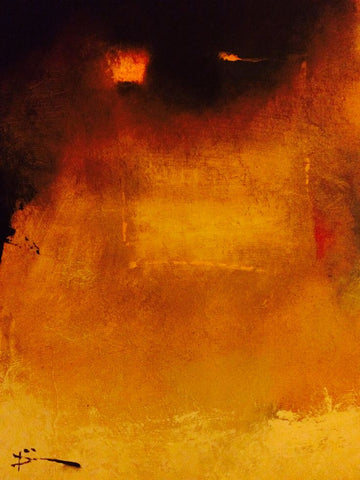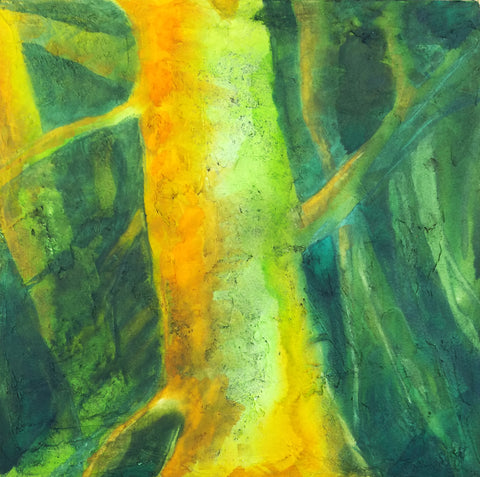My Blog
Time to Experiment January 25, 2023 16:37

I promised myself that if I got into senior housing, I would take advantage of not having to work so much and instead spend more time experimenting with my art rather than trying to paint things that I think will sell. It's not that I dislike anything I've painted. If I do, it never makes it to my site. I probably throw out or paint over about 20% of what I make because it's not good enough or I just plain hate it. But it is much more difficult to take risks with art when you need sales.
But where to start?
One thing I came across that was very helpful was a video by an artist named Chelsea Lang. In this video, she talks about learning what it is that you really want to paint, that you can be passionate about consistently. To discover exactly what that is, she advises gathering images that inspire you. Once you've got a pile, you create a "curated" collection composed of images that you would be proud to have painted yourself; I've posted some of them throughout this page. You then go through the curated collection and make note of the drawing (or not, like with colorfield), the values, the color, the edges, and the composition.


Was I ever surprised what I came up with! I thought I would end up with a lot of landscapes, probably somewhat abstract or subdued. Instead, almost every single one of the 40 images I "curated" were purely abstract and many of them were even monochrome, which I never expected in a million years--get this: even though I often find myself using max 2 colors plus white & black. I marveled at this.
But I also considered it gold in terms of self-discovery.

Chelsea Lang advises that once you've got your curated collection and determined what aspects they most have in common, you have found what you should begin learning how best to paint and start practicing and studying. She also advises worrying about the mechanics of selling once you have worked that out. I think this is the most sensible advice I've heard in a really long time.
So I've begun practicing. It's the best thing I have done for my art in a long time.
Light Dimensional Ground on Canvas September 19, 2020 12:34

I got some of QoR's Light Dimensional Ground and applied it to a couple of 12 x 12" canvases I had sitting around. The stuff was easy to spread with a big palette knife, but I used up 2/3s of the little jar on two canvases. I don't know if I just used too much or what. I like oil paintings with a lot of texture, and I thought I might be able to capture that effect with this stuff, so I went to town. You can see the amount of texture I ended up with.
This stuff is not as smelly as the regular watercolor ground, but I still let it dry out in the hall during the day, and since we have hooligans coming into our building at night to fuck around, I took the canvases in and put them in my window to complete drying overnight. As long as it doesn't rain or freeze, I think that's going to be a good place to let stuff dry.

Today I could hardly wait to try out these supports. One technique I use a lot in watercolor is apply some paint and then mist with a hair mister to get it to run and to encourage particles of pigment to settle in the texture of the paper. I find a hair mister works many times better than a regular sprayer. You can do tiny puffs of mist just where you want them or quickly mist the whole thing to encourage granulation. I was hoping that I could do that with this ground, but I wasn't sure, since I kept reading about how it was spongy. A spongy surface might just sop up the pigment and not allow it to run. In fact, at least one review said that.
But that's not what happened with my paint. I used Daniel Smith's Green Apatite, Winsor Newtown's Prussian Blue, Daniel Smith's New Gamboge, and Winsor Orange. The apatite settled out a dark purplish brown color different from the green that dominates it. It fell into a lot of the creases and rumples and showed up as wonderful specks. It doesn't photograph well, but the photo above shows a detail.

Here's the whole painting. When you get close to the support, it does have the look of grainy paper, but the texture reminds me of acrylic, like modeling paste. The paint isn't shiny in any way. It's completely matte. I didn't feel much of a difference between this and painting on CP except that it lifts much more easily. I tried using that to my advantage to create limbs and trees in the background, but they ended up being overworked. I also tried some highlights that way, but it looked like too-vigorous lifting. So I think I might try lifting and then painting another color over the lift area, like zinc.
I'm not sure if I will add more to this. It might look better with some blue added, especially my beloved cobalt, but OTOH, I'm eager to go ahead and seal it with cold wax and see what happens. I asked the manufacturer if they thought it would be okay to use cold wax on this, because of the spongy thing. They said they didn't know but sounded kind of doubtful. That might be because no one has tried it yet.
This stuff has a lot of possibilities, but I am not sure how much I am going to use it because it is pretty expensive in terms of how far it goes. They produce it only in a small 4 oz jar. :( However, it might be possible to use Golden's molding paste and then either use watercolor on it or spread some of the regular watercolor ground over it.
However, I did just order some of Golden's Crackle Paste to try for texture as well. I didn't realize it could be used with watercolor, but on a hunch, I thought if light dimensional ground could be used that way, so might crackle paste. I can hardly wait to get my hands on it.
I am sensitive to acrylic, but I did okay with these grounds and I don't anticipate hovering over the stuff like I used to do with my paints. I will also allow the supports to dry out in the hall and/or in the window, so I think I will be okay.
I know some people might say, "Why are you trying to get texture with watercolor?" I know it's not "traditional," although in the 19th century, British watercolorists used aquapasto in their watercolors, which can produce low dimensionality with watercolors and is made from gum arabic and silica gel (that is treated in a way that makes it safe). I've used that in the past. It can give you brushstrokes similar to a not-too-heavy Impressionist style. I still need to play with that more.
But as for why insert texture into a watercolor painting, why not? There is no reason why oils and acrylics should get to have all the fun. Texture really expands watercolor and doesn't change its fundamental nature.
Lots of possibilities!
Painting Gimmicks March 26, 2017 18:05
 I was sure surprised when I looked at the Dutch still lifes up close and personal and saw that some of them featured way more gimmickry than I had ever imagined. Read more...
I was sure surprised when I looked at the Dutch still lifes up close and personal and saw that some of them featured way more gimmickry than I had ever imagined. Read more...
Whistler and Lautrec April 8, 2016 20:40
 Whistler would work on a painting for hours and be all happy about it for 15 minutes, "It's GREAT!", bragging all over about it, and then an hour later he'd go and scrape it off the canvas, terrified that someone would see it and think what a crap artist he was. Read more...
Whistler would work on a painting for hours and be all happy about it for 15 minutes, "It's GREAT!", bragging all over about it, and then an hour later he'd go and scrape it off the canvas, terrified that someone would see it and think what a crap artist he was. Read more...
_______________________________________________